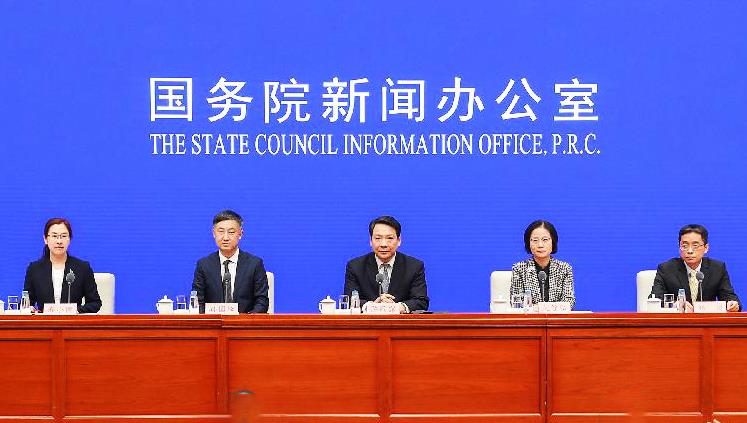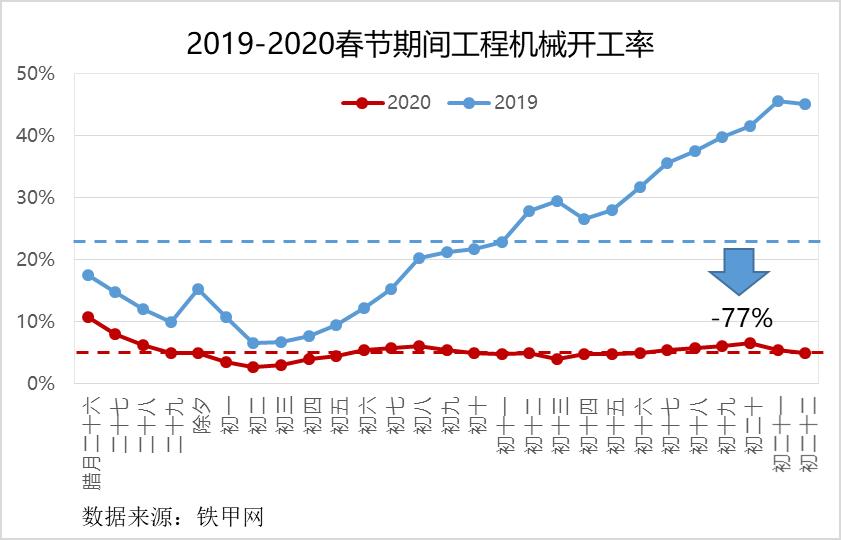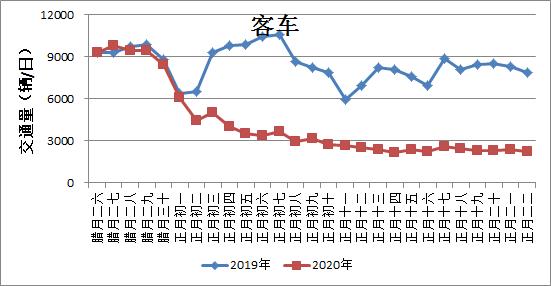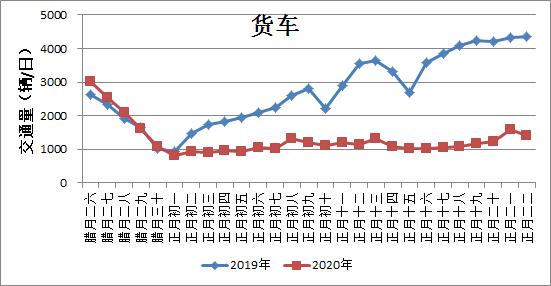
The pictures from top to bottom are:
Sausage and seasoning.
Photo by Luo Yuewen (Image China)
Wanggezhuang steamed bread.
Photo courtesy of Wanggezhuang Street, Laoshan District, Qingdao
Hakka fried hairpin.
Lan Qilong
Hemp leaves and burnt meatballs.
Photo by Wang Xu
I love the bacon in my hometown.
Zhou yujiao
When there are mountain people on the street who pick fragrant cypresses, I know that the year is approaching.
Zunyi, located in the southwest, mostly belongs to the alpine mountainous area, with abundant rainfall and humid climate all year round, and food, especially meat, is not easy to store. In the years when there was no refrigerator, the mountain people made bacon, which was hung on the stove for many years and was smoked and roasted by the stove fire. This kind of bacon gradually changed from light chestnut to burnt black, but the taste became more and more mellow.
Living in the city, there is no firewood to cook, but smoked bacon is still an essential new year’s goods, otherwise it will lose its flavor in 2008. I still remember that there was a big tin bucket in the family courtyard where I lived. Before and after the winter solstice, the tin bucket came in handy. Since the first family began to smoke bacon, the smell of smoke in the small courtyard has been floating until the 28 th of the twelfth lunar month, never stopping.
Smoked bacon, for any family, is a major event in the New Year. Early, my mother went to the vegetable market to buy fat and thin "two-knife meat" and pork belly, and cut them into strips of moderate size. When you come home, first smear high-alcohol liquor on the meat, which can not only disinfect and sterilize, but also benefit the taste. Then add the salt to spices such as pepper and star anise, stir-fry slowly with low fire until the salt is slightly yellow, and rub it repeatedly on the pork while it is hot to let them penetrate into the meat. Marinate it for about a week, turn it twice, then take it out and dry it, and you can smoke it.
Just as there can be no bacon in the annual flavor, can there be no sausage in the bacon? The most technical part of sausage is seasoning, and each seasoning has its own advantages, whether it is spicy or sweet, depending on preferences.
Filling sausages is also a technical job, too tight, and it is easy to break the extremely thin casing; It’s too fluffy to cut into pieces after steaming, even if it’s a housewife’s hand, when she eats a "round meal" in the first month, it will definitely make her relatives talk for a long time. After the meat is poured into the casing, one section is tied tightly with cotton thread. The last process should not be vague. Punch the hole with a needle to let out the air in the sausage.
Marinate for about a week, turn and knead once in the middle, air dry for two days, remove the water, and you can smoke. Mother took out the usual accumulated seed shells, peanut shells, dried orange peels and bagasse, and went to the street to find a load of cedarwood and some sawn wood surfaces, and everything was ready.
Put the meat and sausage on the steel bar that crosses the tin bucket in an orderly way, cover it with several layers of thick linen, light the stove door specially opened under the tin bucket and add cypress, and the bacon will begin. The fragrance of cedarwood and nut shells floated out with the white smoke, and in a short time, the oily smell of bacon also escaped. In the crackling burning sound, the meat creaked slightly. From time to time, a drop of oil dripped into the fire, and a spark burst out, and another spark burst out.
Bacon is a chore. Mother has to stay by the iron drum all day, and can’t leave for a moment. It is necessary to add fuel from time to time to ensure that there is smoke coming out continuously. More attention should be paid to controlling the fire not to be too big, not to burn the meat, and to turn it off once in the middle to make the meat smoked more evenly.
At dusk, the meat was finally smoked, brought home and hung on the balcony. The fragrant smoke filled the whole room instantly, and glittering oil beads dripped from time to time. This is the fragrant smell of "Nian".
On New Year’s Eve, bacon sausage is undoubtedly the protagonist. After this day, relatives began to eat "turn around". Each family’s signature dishes have their own merits, but the position of preserved meat has never been shaken, and it is the most popular whether it is drinking or eating. Each family has its own bacon flavor, which is an important criterion for judging a housewife’s cooking.
Bacon in the mother’s hands can be described as endless changes, which can be combined and perfect — — Stewed square bamboo shoots with preserved pork feet, stewed rice with preserved ribs, fried turnips with preserved meat, fried ferns, and fried broken ears with sausage … … Everything is an authentic taste of northern Guizhou.
Of course, it is more common to cook directly without any side dishes. In the more mellow and thick wax fragrance, the fat is crystal clear, the thin ruddy is firm, and it is fat but not greasy, thin but not firewood, and the thick oil fragrance is accompanied by a touch of vegetation fragrance, which is an unusually rich annual flavor, from the first year fragrance to the end of the year.
Now that there are abundant materials, there is no need to store meat by smoking. Home-cooked bacon is becoming less and less. All the year round, we go to the market to purchase finished products, and we can feast on them with a little cooking. But I still miss the time when I smoked bacon at home, because the smell of bacon filled with fireworks carries the memory of time and the taste of family.
Hong huo huo Zheng mantou
Wang Qin
"Aunt Li, let’s make a big steamed bun by soaking in the starter and making a good face!"
"Uncle Zhang, steamed bread is up to you. The wind should be strong and the flames should be strong! "
In the cramped painting, all the shouts rang out, and all the people in the hospital could hear clearly. Then Aunt Li was busy finding out the basin and soaking the starter. Aunt Wang washed and washed a bunch of "clips" and wiped and wiped them; Zhang Shu lit the stove with firewood, then "Huda Huda" pulled up the bellows, and the flames burst out of the furnace, making the kitchen red. In a short time, hot steam floated out of the open window, and the bellows rang even louder.
Steaming steamed bread in the New Year is one of the important contents of welcoming the New Year. In Qingdao, my hometown, in the past, steamed bread must be among the sacrifices offered to ancestors at festivals, which shows the position of steamed bread in people’s minds. Nowadays, although steamed bread has become a common thing, its meaning is still far-reaching. Making steamed bread should be "steamed" and "steamed", which is related to homophonic words such as "getting rich" and "thriving" and is also an expression of people’s New Year’s vision. Therefore, despite the abundant food and convenient purchase, many people still keep the custom of steaming steamed buns for the New Year.
Making steamed bread is indispensable for "jujube cake". Insert the washed dates evenly into the round dough, which looks like a "jujube hill" at first glance. Some also cut the jujube into pieces, remove the jujube core and insert it on the steamed bread, which looks like a fish scale, like a fat "jujube fish" and a "hedgehog" full of thorns. The interpretation of jujube in the workshop is mostly homophonic: lucky strike, thriving, is a symbol of happiness and auspiciousness. Jujube cakes are not only visually beautiful, but also sweet and auspicious. Eating Chinese New Year’s jujube cake will usher in a year of good luck.
In addition to making steamed bread, steamed "clips" are also indispensable pasta for the New Year. "Clip" is a kind of woodcut mold, which is specially used to make various kinds of pasta, and the pasta people will make with it is also called "clip". "Clip" is actually a kind of steamed bread, but the style is different. The "clip" dies are large and small, long and short, square and round. There are many patterns of "clip", such as fish, peach, lotus, cicada, zodiac, etc., as well as the word "Xi", "Fu" and "Shou", which means that there is more than enough every year, good luck and peace.
Generally, after off-year, the compound will be lively. Neighborhood help each other, some provide "old introduction", some guide "hair face", and aunts will help the families of dual employees; Anyone who has a "clip" at home will contribute, and each family will take turns using the "pass the parcel". In those days, people with big iron pots even went to their neighbors to cook, and the big iron pots were specially used to steam steamed buns for their neighbors. From morning till night, you come and I go, and the owner goes west. The joyful, harmonious and warm atmosphere hangs over the whole compound, which makes people feel the beauty of the New Year.
After steaming steamed bread, put it in a cool and dry place. Half a century ago, ordinary people didn’t have refrigerators and freezers, and the cool places such as aisles and corridors were used. Wrap the steamed bread and "clip" with clean gauze, and then wrap it with a protective layer, or put it in a jar, jar or carton for more than ten days. Some of them are preserved properly, and they are as delicious as ever after the first month.
The first month is a day of delicious food. With braised pork, fried fish and freshly fried vegetables, drinking two or two small wines and eating a white and soft steamed bun or "clip", there is simply no way to say that happiness!
In the 21st century, some traditional customs are slowly changing, but their "roots" are still there, and they are endowed with new contents and new forms, becoming more and more popular.
Now during the Spring Festival, people can go to the supermarket to choose all kinds of steamed bread and "clips" at will, and there is no need to ferment, mix flour and knead shapes by themselves. Steamed bread has also become a tool for hometown people to get rich. Wanggezhuang, Qingdao, set up a big steamed bread production base more than ten years ago, and the sub-district office is responsible for ensuring "materials", "quality" and "reputation": yeast is provided in a unified way, and flour is invited for bidding once a year, which not only ensures the nutrition and grade of flour, but also encourages surrounding farmers to grow a variety of good grain. The industrial chain, with big steamed bread as the main product, accompanied by fancy steamed bread such as "Swallow", "Fushou Peach", "Fugui Fish" and "Jujube Flower Cake" as the secondary products, has made this land at the foot of Laoshan Mountain present a prosperous and beautiful scene, and let the local villagers really taste the sweetness of common prosperity.
"No hairpin but a new year"
Zhong Zhaoyun
In the Hakka mountainous area at the junction of Fujian, Guangdong and Jiangxi provinces, there is a kind of delicious food called "Zan", which generally refers to the food made by grinding rice into powder or pulp. There are many kinds of them, which should be made in solar terms. According to the stuffing, color, shape and so on, they can be used as snacks, staple food or even a dish. Hakka people have it on their dining tables all year round, and it is a "hard dish" during the Spring Festival, which can be seen from the saying that "there is no hairpin but the New Year".
Since I was a child, I have an extraordinary hobby for hairpin, especially the special fried hairpin in Yanqian Town, Wuping County, my hometown in western Fujian. It is golden in color, crisp on the outside and tough on the inside, sweet and delicious. After eating it overnight, it becomes crunchy when bitten, and it is famous for its long shelf life.
As soon as the New Year’s Eve arrives, every household begins to make chopsticks, and when they arrive at the village entrance, they can smell the fragrance floating in the air. At this time, no matter how naughty and active the children are, they can quietly wait around the steaming stove to eat. After the "small balls" reach their mouths, they often catch a few out of the house to show off their "wealth" to the village friends and eat with relish like greedy cats. Hakka people are simple, kind, warm and generous. They have fried the hairpin at home. As long as they know who has not cooked the pot next door, they will bring a bowl to taste it together.
As far as I can remember, during the Chinese New Year, my father took care of the hairpin at home, from cooking brown sugar, rubbing the hairpin balls to frying with fire, and my mother and my brother and sister were responsible for passing the "small balls" in the hall. The "small balls" are well-proportioned, and dozens can be arranged in a big bamboo basket, not next to each other, not to overlap, in case of sticking. When a basket is made here, a pot is almost fried in the kitchen, and several large bamboo baskets are replaced by turns. Both sides are in full swing, and they must do it in one go before the 29 th of the New Year’s Day, and they have to give up the stove for the New Year’s Eve.
Gradually, my position rose from the firewood worker in the kitchen to the main player of the hairpin, but I never replaced my father’s "handsome" position. In fact, the coach is not good, the ratio of indica rice flour to glutinous rice flour is out of balance, the sugar water is not in place, and the heat is not enough, which will easily lead to the phenomenon of fried dough, incomplete frying, and a pot of coke. Under normal circumstances, when the oil temperature is 60% hot, the ball table turns yellow in a few minutes, and then it is fried for an hour or so with a small fire. From time to time, the ball is turned over with a spatula to avoid burning the sticky pot, then covered with a bamboo cover, and placed in a fixed porcelain basin until the oil drops dry before entering the cylinder. Hairpins are fried crystal clear one by one, and they are caramel color soon after they are taken out of the pot, and they will become the famous fried hairpins in front of the rock after being put on overnight. Making a good pot of hairpin requires the cooperation of many people, but the technical work still depends on the veteran at the helm.
The happiest thing at the labor site is to cook and eat now, and take a bite of incense. Adults always fry the first pot for seven minutes in order to let the greedy children eat the hairpin early, which is called "seed fire hairpin", which is soft and sweet and won’t get angry if they eat more. Once I ate a dozen in a row, and a big bowl filled with them turned upside down in an instant. The more children eat, the happier their mothers are. When my mother is happy, she will sing the ballad that my grandmother taught when she was alive: "The foreign leaf (butterfly) leaves Ye Fei, and my mother will return to her daughter; Take the big hairpin to sister, and leave the small hairpin to tease the younger brother. " Full of sound and emotion, people feel that happiness is so simple and family affection is so priceless.
Pots of round, hot, delicious hair sticks are fried, fat and thin bacon is available, fragrant rice wine is brewed, red Spring Festival couplets and door gods are posted, and all the rooms are clear and cool, and the laughter and laughter at home and in the village are transmitted in the spring breeze.
Most families in my hometown will keep some chopsticks and take them with them when they go to spring ploughing, which are called "supporting bones" as dry food or snacks. If you have a bad mouth, you can steam it with breakfast or cut it into small pieces to eat cold. Some old people also stew porridge or stewed sweet potatoes, the taste is unchanged, and the teeth are stiff. This flavor of the year is still original after the Dragon Boat Festival.
After many years, we have grown up and traveled all over the country, but we can never forget the taste of our hometown. Every year during the Spring Festival, I invite two or three relatives and friends to get together at home to taste the fried hairpin in front of the rock. If there is "Wuping dried pork gall", which is the first of the "eight dry things in western Fujian", and then there is a "rock sheep stew" which should only be in the sky, it will be better than the fairy. The taste of hometown and the feelings of wanderers are worth savoring all your life.
"Uncle, have a bowl of fried chopsticks … …” Nowadays, when I go home, I often just sit down in the living room and hear the voices of my nephews. There are a dozen exquisite hairpin in the bowl, and the smiles on their faces are just like the "reunion fried hairpin" in front of them, which is festive and brilliant.
Delicious "flowering"
Li Dan cliff
In my hometown of Bozhou, Anhui, before the Spring Festival, people like to make hemp leaves, commonly known as "scorched hemp leaves", and some elderly people call them "scorched leaves". Hemp leaf, as its name implies, is a gourmet with sesame as its main feature. Sesame is divided into black and white, so hemp leaves are also divided into black sesame leaves and white sesame leaves.
As soon as winter comes, housewives begin to be busy with the New Year. They took the sesame seeds harvested in autumn out of the bag, filtered the dust with clear water and dried them for later use. You can be very particular about noodles. To make noodles with hemp leaves, it is necessary to mix them with vegetable oil, which can ensure the pure taste and the crisp and delicious fried hemp leaves. When the dough is mixed, it needs a disk surface, and then it is rolled into a dough. When the dough is almost rolled, stretch the dough, sprinkle with sesame seeds, and roll it again to ensure that the sesame seeds and the dough stick together. Then roll up the dough on a rolling pin, "stab" it with a knife, and cut the multi-layer dough from the middle. The dough was cut into pieces, then cut into diamonds and dried in a sieve basket.
The wind at the end of the year soon evaporated the water in the diamond-shaped dough in the sieve basket. At this time, the hemp leaves were initially formed, and sesame seeds were visible on the dough. Then, add raw hemp leaves into the oil and fry them with slow fire. Until the hemp leaves turn yellow, stir them up with a hedge and clatter. After the pot is cooled, the hemp leaves are crispy and delicious, and the house is full of fragrance.
There are many ways to eat hemp leaves, which can be placed on a plate and served as a dish. It can also be sandwiched in the middle of hot steamed bread to eat. The hot air of hot steamed bread can catalyze the fragrance of oil and increase the taste of hemp leaves. Or break hemp leaves and wrap them into flat food with leeks and shrimps to eat; It’s not bad to eat as a refreshment. There is no trivial matter in the twelfth lunar month in my hometown, and my family sits around and "eats their teeth". "idle teeth" is a dialect, which means eating delicious food and chatting. The family sat in the living room watching TV and eating hemp leaves, enjoying themselves.
The color of hemp leaves is like gold, so it is called "Jin Yezi". In addition to hemp leaves, there are prickly heat for the Spring Festival. At this time, the prickly heat is "small prickly heat", which is made of sesame oil and flour, sprinkled with sesame seeds and rolled into rectangular pieces. The knife cuts several holes vertically on the dough sheet, and the two ends are kept open. When it is pinched and twisted, it becomes a candy style, which is small and unique and fragrant. On the day of the northern off-year, my grandmother would stack the fried prickly heat layer by layer in a white porcelain plate, like a golden hill, and let the children eat it together with the candy for the stove. Grandma said, "If you eat a small prickly heat, you have to chew something! Otherwise, a good tooth and a crisp mouth are wasted. "
Eating related to "Year" has a good color. Hemp leaves have the meaning of spreading branches and leaves, and having more children and more happiness; The small scorpion has the meaning of twisting into a rope and family unity. Another delicious fried food — — Jiaowanzi means reunion.
To make burnt meatballs, you should also use sesame oil and flour. Whether the meatballs are burnt or not, fans are the key. Good sweet potato vermicelli, soaked in hot water for two hours, chopped into pieces, mixed with flour and paste, sprinkled with spiced powder, salt and other things. Grab a handful of dough and hold it in your hand. Squeeze it a little hard, and the batter will come out from the jaws of the tiger and squeeze it into the boiling oil pan. It will "squeak" and immediately rise to a fragrance. The fried burnt meatballs are crispy and delicious, and can be eaten directly, steamed or put in mutton vermicelli soup, which has a unique flavor. Today, burnt meatballs are still a necessary food for people in northern Anhui at the end of the year.
Hemp leaves, small prickly heat and burnt meatballs are rolled into flowers in the oil pan, and the state of food blooming in boiling oil seems to welcome a hundred flowers after the Spring Festival. Apart from eating hemp leaves, small prickly heat and burnt meatballs, all kinds of sweets, chocolates and biscuits are on the table, and every household seems to have opened a small supermarket.
When writing this article, I saw that my mother was wearing reading glasses to cut the window grilles, which were the patterns of magpies climbing branches, while my daughter was carrying the hemp leaves that her grandmother had just fried and squeezing the ketchup … … Happy and beautiful days are just around the corner.
In such an important festival as the Spring Festival, food brings people not only delicious food, but also a sense of reunion and joy. The family is sitting around, the lights are amiable, and the delicious "flowers" live up to the Spring Festival.







